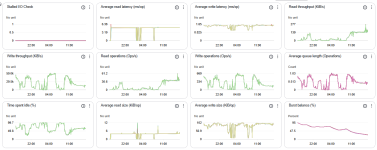In a previous post, I discussed how an St1 Volume backs our remote backups on EC2. As we rapidly reached the Maximum size of an ST1 EBS Volume. ZFS has entered to save the day with v2.3 and the ability to quickly and easily add disks to zraids.
On paper, an array of 4 8TB ST1 volumes should vastly outperform our existing 16TB ST1 volume. But this begs the question, what about 7 SC1 Volumes? Has anyone tried this configuration? what are your experiences? It seems like populating the list of backups is dependent on storage speed. Has that been an issue for anyone?
It is likely we will move to S3 when that leaves Preview. If you would like to share your experience with that, feel free, but I'm looking for input from you penny pinchers. Is the performance hit Worth $1000 a month?
On paper, an array of 4 8TB ST1 volumes should vastly outperform our existing 16TB ST1 volume. But this begs the question, what about 7 SC1 Volumes? Has anyone tried this configuration? what are your experiences? It seems like populating the list of backups is dependent on storage speed. Has that been an issue for anyone?
It is likely we will move to S3 when that leaves Preview. If you would like to share your experience with that, feel free, but I'm looking for input from you penny pinchers. Is the performance hit Worth $1000 a month?


